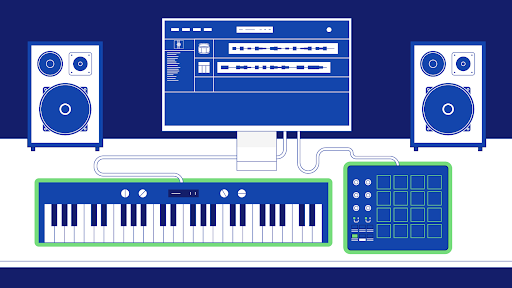MIDI (Musical Instrument Digital Interface) files have become an invaluable tool for musicians and producers across all genres. They offer a level of flexibility and control over music creation that was unimaginable before their development. Here’s a closer look at why MIDI files are so important when creating music and how they can enhance your creative process.
1. What Are MIDI Files?
MIDI files are digital representations of musical notes and commands rather than audio recordings. Unlike audio files, which store actual sound waves, MIDI files contain data that tells electronic instruments or software how to play a song. This includes information about pitch, velocity, tempo, and more. Because of this, MIDI files are incredibly lightweight and versatile, making them ideal for various musical applications.
2. Flexibility and Control
One of the biggest advantages of using MIDI files in music production is the flexibility they provide. With MIDI, you can easily change instruments, adjust tempo, or modify notes without re-recording a performance. This is particularly useful in a digital audio workstation (DAW) where you can experiment with different sounds and arrangements without being locked into a specific audio recording. MIDI allows you to make adjustments quickly and efficiently, speeding up the creative process.
3. Precision and Editing Capabilities
MIDI files offer unparalleled precision in editing. You can tweak every aspect of a performance, down to individual notes. If you miss a note or want to change the dynamics of a section, MIDI makes it easy to make these adjustments. This precision is especially helpful for composers who want to refine their pieces or for producers who need to ensure that every note aligns perfectly with a beat or melody. The ability to edit MIDI files in detail allows for greater creative freedom and helps musicians achieve the exact sound they envision.
4. Integration with Virtual Instruments and Plugins
MIDI files are essential for integrating virtual instruments and plugins into your music production. Virtual instruments rely on MIDI data to generate sounds, from realistic orchestral samples to synthesizers and drum machines. By using MIDI files, you can control these virtual instruments in real-time, layering complex arrangements and experimenting with different textures and sounds. This capability is crucial for modern music production, allowing for a wide range of sonic possibilities.
5. Easy Collaboration and Sharing
MIDI files are also great for collaboration. Because they are small and contain only performance data, they can be easily shared with other musicians and producers. If you’re working with someone remotely, you can send a MIDI file, and they can use it to reproduce the music with their own instruments or software. This ease of sharing makes MIDI an excellent choice for collaborative projects, allowing artists to work together seamlessly across different platforms and setups.
6. Learning and Inspiration
For musicians and producers looking to learn and grow, MIDI files can be an excellent educational resource. You can analyze MIDI files to understand the structure of a piece, study chord progressions, or learn how certain rhythms and melodies are constructed. Using resources like Unison MIDI files, musicians can access a library of professionally crafted MIDI sequences to inspire new ideas and improve their songwriting and arrangement skills.
In conclusion, MIDI files play a crucial role in modern music production. They offer flexibility, precise control, and the ability to integrate seamlessly with virtual instruments, making them an indispensable tool for musicians of all levels. Whether you’re looking to refine your compositions, collaborate with others, or explore new musical ideas, MIDI files provide the versatility and convenience needed to bring your creative vision to life.
Keep an eye for more latest news & updates on Chicago Heading!

